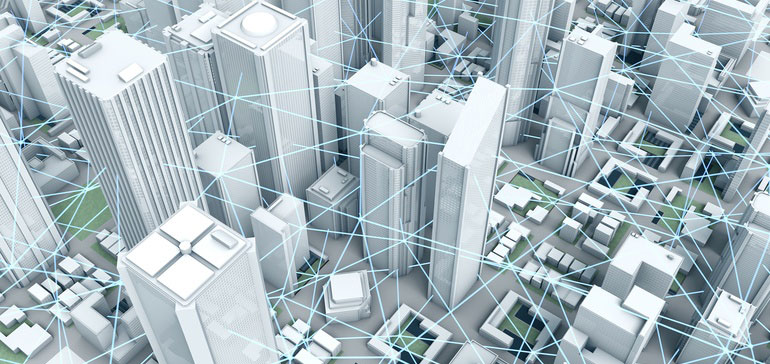The evolution of smart tech: What will our cities look like in 2025?

There’s no question Internet of Things (IoT) technology is pivotal for the future development of smart cities. While smart cities have been depicted in TV shows and movies for years, showing futuristic worlds where cars can fly or where drones buzzing overhead is the norm, the truth is a version of this reality is closer than you think.
In response, companies must be better prepared for the onslaught of demand by today’s consumers who have become accustomed to a convenience-based society. Those movies, and the consumer views that come with them, are focused on the narrow front end or consumer-facing view (the flying car, the delivery drone, or the smart building itself). The “smart city” will only become a reality when the backbone of the city – the infrastructure and moreover, the software that will dynamically bring all these parts together for the efficient and responsible lives of the cities inhabitants – is in place and widespread.
We’re already starting to see forward-thinking companies test futuristic, IoT-driven technologies that have the potential to make a great impact on us day-to-day, making life easier and more immediate. Take Amazon, for example. The innovative retail giant has been publicly testing drones for package delivery, even filing a patent for a drone hive to accommodate and optimize deliveries in urban areas. However, in order to be as efficient as possible, companies that choose to participate in the on-demand ecosystem will need to evaluate the platforms these technologies are powered by to make sure they can withstand our demand-driven and connected world.
Barriers to living in an intelligent world
Many companies investing in smart city technologies are too focused on the consumer side of IoT (the “flashy side”) and are hindered by outdated, inefficient backend infrastructure forcing them to rethink their strategy. Current models rely too heavily on inefficient oversupply of resources, when they should be meeting demand with the appropriate supply to eliminate inefficiencies. That said, companies need to shift their focus and put as much emphasis on backend infrastructure and operations execution as they currently do on the consumer-facing aspects of the business.
Additionally, people are by nature risk-averse, so the concept of creating smart cities is one many will have to overcome – specifically the government organization in which these cities will exist. Knowing that things will go wrong in the early years of smart cities and IoT technology adoption, it will take a select few to be the first movers, take the risk, and carve the path for others.
The important role infrastructure plays in making cities smart
Our society is becoming increasingly dependent on convenience-based, on-demand services for daily tasks like grocery shopping, meal delivery and hailing a ride. In fact, more than 22.4 million consumers currently use on-demand services and researchers believe by 2020, and almost one in five U.S. workers (the equivalent of 31 million people) will rely on the gig economy for employment. This projected growth creates a critical need for efficient, optimized, real-time dynamic software to support our IoT-driven lives. Unfortunately, most companies are currently operating in inefficient, individual silos that bottleneck streamlined services. In order to reach the next phase of “smart cities,” companies involved in the on-demand ecosystem will need to optimize their own resources through a dynamic technology that enables more efficient and effective processes.
Smart technology adoption leaders
Despite what many might believe, we’ll likely see rural areas – not major cities – adopt smart technologies such as delivery drones and autonomous vehicles first. Just think: our densely-populated metro areas with towering skyscrapers and pedestrian filled streets below do not create an ideal location for early testing and longer-term implementation. Instead, rural areas not only provide open skies and sparse populations, but these communities actually stand to benefit the most by utilizing optimized smart technologies that provide efficient, low-cost and timely services.



